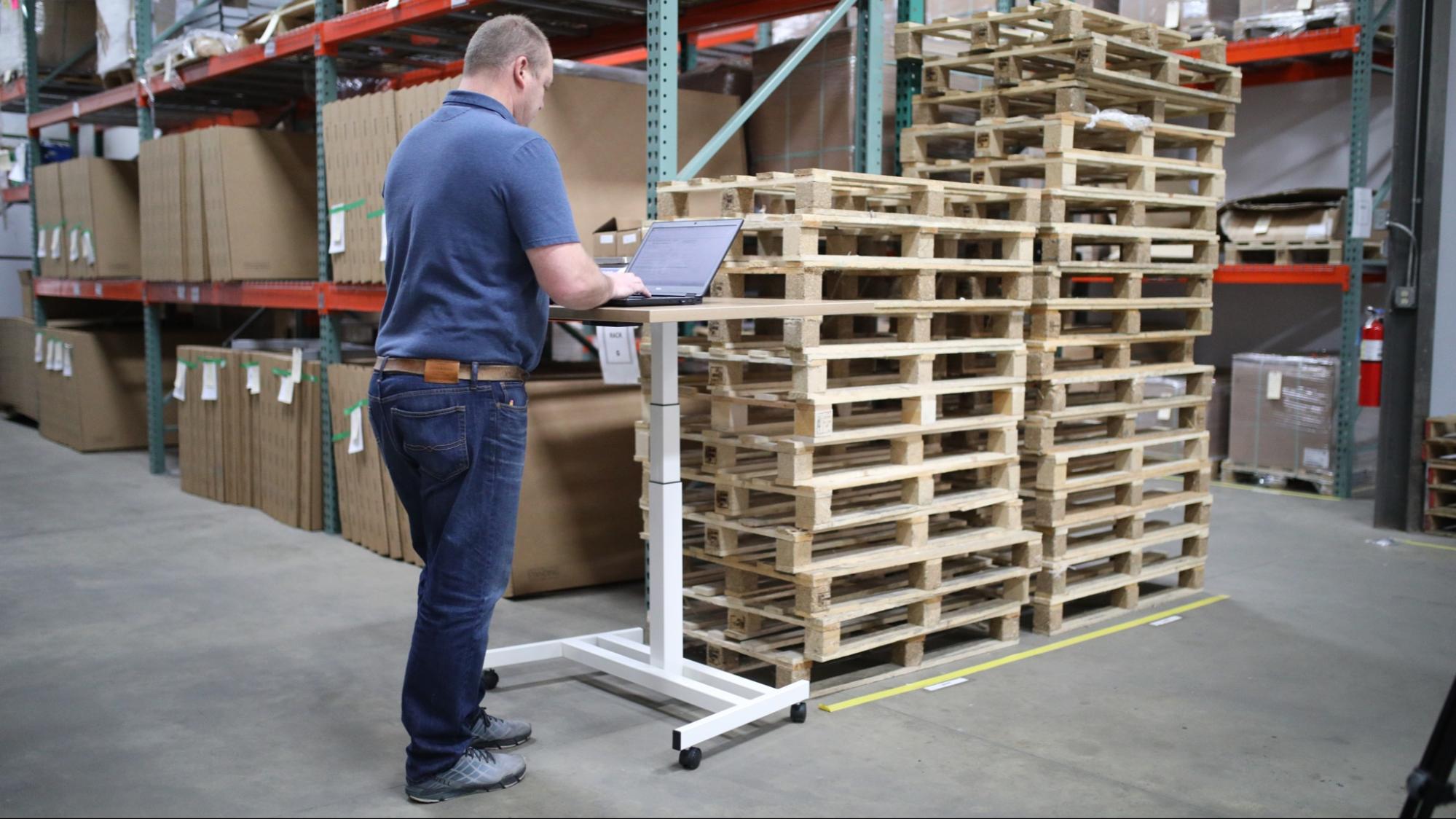Modern businesses around the world are reaping the benefits of cloud technology – and for good reason.
Cloud solutions can help companies improve collaboration, save money, and scale quickly and sustainably.
But have you ever considered implementing cloud computing in supply chain management?
In the dynamic business realm, supply chain management is the vital force that keeps everything running smoothly. But let’s face it, managing supply chains can sometimes feel like wrestling an octopus: messy and overwhelming.
Enter cloud computing, a digital toolbox that transforms your supply chain into a well-oiled machine.
In this complete guide, we’ll explore the incredible benefits of cloud computing, from enhanced flexibility to data-driven insights. Plus, we’ll explore how to empower your business to thrive and gain a competitive advantage.
What is cloud computing?
Imagine having a digital genie that stores and processes all your data, granting you access from anywhere, at any time. That’s cloud computing in a nutshell. Consider it a magical assistant that takes care of your data needs while you focus on running your business.
Let’s say you’re a busy entrepreneur who’s constantly on the move. You need to stay connected with your team, even when you’re not physically in the office or even the same country.
With a business phone system app powered by the cloud, you can make calls, send messages, and collaborate with colleagues seamlessly, whether you’re sipping coffee at a local café or basking in the sunshine on the beach.
There are various types of cloud computing you should know about, including:
- Infrastructure as a Service (IaaS): With this, you can manage your own software apps and operating systems using the cloud infrastructure provided by a service provider.
- Platform as a Service (PaaS): PaaS takes convenience to a whole new level. You can effortlessly build, develop, and deploy applications and focus on crafting excellent software without getting tangled up in the nitty-gritty details of infrastructure.
- Software as a Service (SaaS): External platforms put a wealth of incredible software applications at your fingertips. No need to fret about installations or maintenance headaches. You’ll have an email service, CRM tool, or project management system ready to go with just a few clicks.
Cloud computing in supply chain activities
For many modern logistical teams, simply viewing orders or tracking shipments isn’t enough. To really power up your activities, enhance operations, and improve the customer experience, companies need to visualize every stage of the process.
Cloud technology allows teams to do just that, gaining complete insight into various steps from production to delivery. So what specific areas of your supply chain activities can cloud computing improve?

Logistics
In a bustling warehouse filled with gadgets, components, and eager workers, cloud solutions can be instrumental for improving efficiency and productivity.
For example, with the help of remote desktop access and remote monitoring software, you can track inventory levels in real time, streamline order processing, and optimize warehouse operations.
It’s like having a superhero assistant that ensures the right products are where they should be, when they should be, eliminating bottlenecks and keeping your supply chain running smoothly.
Forecasting
We all know the importance of accurate demand forecasting, and cloud computing brings its magical touch to this crucial activity.
Powered by data analytics and supported by remote access capabilities, cloud computing services analyze historical sales data, market trends, and even external factors like weather patterns or social media buzz.
With these capabilities at your fingertips, you can access forecasting insights on the go, making informed decisions about production volumes, inventory levels, and resource allocation. In this way, you can anticipate customer demand and stay ahead of the competition.
Planning
Planning is the secret ingredient that ensures your supply chain operates smoothly. And cloud computing provides a centralized platform for collaborative planning.
With cloud-based planning tools, you can harness the benefits of remote desktop access, enabling easy connectivity for your teams. Regardless of their physical locations, everyone can come together virtually to coordinate production schedules, manage lead times, and align inventory levels.
Let’s say you need to adjust production schedules due to unforeseen circumstances, such as a sudden increase in demand or a supply shortage. With a cloud-based planning system, you can quickly communicate these changes to suppliers and manufacturers, allowing them to adapt their processes accordingly. This agility helps minimize disruptions and ensures that products reach your customers on time.
Analytics
Data is the lifeblood of modern businesses, and it’s no different when it comes to supply chain optimization. That said, it’s crucial to effectively manage and assess data to get the most out of it.
With advanced analytics tools and the ability to access data through a remote desktop, cloud solutions allow you to dive deep into data to uncover valuable insights. This means you can analyze transportation costs, identify inefficiencies, and pin-point opportunities for improvement.
Consider it a magnifying glass that uncovers hidden patterns, empowers data-driven decision-making, and paves the way for continuous optimization.
It’s clear that cloud computing can significantly transform various supply chain activities. But what specific benefits can the cloud and its remote access capabilities bring to your company?
Benefits of cloud computing in supply chain management
Managing a supply chain can be complex. But modern solutions like cloud-based tools are making processes significantly easier for supply chain managers and other team members. This section will explore some of the more specific benefits of cloud-based solutions.
1. Streamlined communication and coordination
By their very nature, supply chains have various contact points. And with so many people, departments, and companies involved, coordinating between everyone can become increasingly challenging.
Cloud-based software can be extremely helpful for ensuring everyone is on the same page and receives the latest updates.
With cloud contact center software, you can communicate with everyone across your supply chain – customers, clients, partners, suppliers, and colleagues – over the internet.
Not only do cloud-based platforms ensure a high-quality call, they also allow you to centralize communications, quickly add new clients to a database that everyone can access, automatically transcribe calls, and store all data in the cloud.

2. Collaborative powers
In the world of supply chain management, collaboration is key – and cloud computing takes collaboration to the next level.
Let’s say you need to coordinate with suppliers across different time zones. Instead of endless back-and-forth emails or phone calls, cloud-based collaboration platforms will save you time and effort.
Shared access to data, documents, and project management tools allows everyone to be on the same page, no matter where they are in the world. Similar to a virtual meeting room, the cloud is a place where ideas flow and decisions are made.
With cloud computing as your ally, collaboration becomes seamless, boosting efficiency and driving your entire supply chain toward success.
3. Unleashing data-driven insights
Collecting data is one thing; analyzing it to drive growth is another.
Using cloud-based software, you can monitor data analytics to unlock valuable insights that guide your supply chain decisions. Various logistics, inventory, and Enterprise Resource Planning tools allow you to monitor real-time data across various elements of the supply chain and analyze historical data.
With this information, you can predict demand patterns, optimize inventory levels, and ensure you maintain the right stock levels.
In this way, cloud computing becomes your crystal ball, helping you make smart, data-driven choices that propel your supply chain forward. This helps pave the way for efficiency, cost savings, and satisfied customers.
4. Cost savings
When it comes to managing a supply chain, cost savings are always a top priority. Cloud computing has incredible potential for reducing expenses.
With cloud-based solutions, you can say goodbye to hefty upfront investments in hardware and infrastructure. Instead, you pay for what you use – much like a utility bill – and can scale up or down based on your business needs.
Moreover, cloud computing eliminates the need for maintaining and upgrading expensive on-premise systems. The burden of hardware maintenance, software updates, and cybersecurity measures falls on the shoulders of the cloud provider.
It’s like having a team of IT experts working round the clock to ensure your supply chain runs smoothly without you having to lift a finger. These cost savings can be reinvested into other business areas, such as research and development or expanding your product line, fueling your growth and innovation.
5. Scalability and flexibility
Supply chain management is a dynamic field, so adaptability is crucial.
Imagine this: your business experiences a sudden surge in demand. With cloud computing systems like warehouse management software (WHM) or transportation management system (TMS), you can easily scale up your resources to meet the increased demand.
For example, implementing Warehouse Management System (WMS) software can instantly help you streamline your picking and packing processes, ensuring that your growing number of orders are handled efficiently.
Final thoughts
The benefits of using cloud computing in supply chain management are clear. From streamlined communication and enhanced collaboration to data-driven insights and the ability to scale, cloud-based tools are vital for any modern business looking to grow.
If you’ve never looked into cloud solutions before, consider the various ways they can boost your team’s efficiency, organization, and productivity. By optimizing processes along the supply chain, you can exceed demand, scale up your services, and improve customer satisfaction – it’s a win-win.













